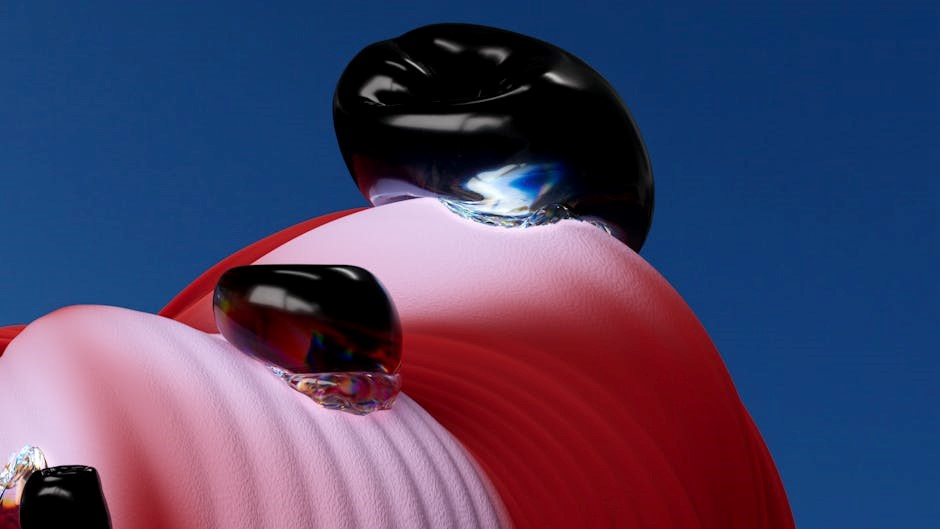Artificial sweeteners are synthetic sugar substitutes designed to reduce calorie intake while maintaining sweetness. Common types include aspartame, acesulfame-K, sucralose, and saccharin, widely used in foods and beverages.
1.1 Definition and Purpose
Artificial sweeteners are synthetic or natural substances that mimic sugar’s sweetness without providing significant calories. They are primarily used to reduce calorie intake, manage blood sugar levels, and cater to dietary preferences. These sweeteners are ideal for weight management and suitable for individuals with diabetes, offering a low-calorie alternative to sugar in foods and beverages.
1.2 Brief History of Artificial Sweeteners
Artificial sweeteners emerged in the late 19th century with saccharin, discovered in 1879. Aspartame, introduced in 1965, gained FDA approval in 1981. Sucralose followed in the 1990s. These discoveries expanded sugar-free options, driven by growing health concerns. Regulatory approvals and safety evaluations have shaped their acceptance, while natural alternatives like stevia gained prominence in recent years.

Popular Types of Artificial Sweeteners
Popular artificial sweeteners include aspartame, acesulfame-K, sucralose, and saccharin. These are widely used in low-calorie foods, beverages, and tabletop sweeteners, offering high sweetness with minimal calories.
2.1 Aspartame
Aspartame, discovered in 1965, is a widely used artificial sweetener, 200 times sweeter than sugar. Approved by the FDA in 1981, it is commonly found in diet drinks, tabletop sweeteners, and sugar-free products. Known by brand names like Equal, aspartame is a popular low-calorie alternative, though it has faced controversies regarding potential health impacts, including effects on gut health and glucose tolerance.
2.2 Acesulfame-K
Acesulfame-K, commonly abbreviated as Ace-K, is a highly sweet artificial sweetener, approximately 200 times sweeter than sugar. Approved by the FDA, it is frequently used in diet beverages, desserts, and sugar-free products. Often blended with other sweeteners like aspartame for balanced flavor, Ace-K has faced scrutiny due to animal studies suggesting potential metabolic effects, though human safety remains widely supported by regulatory bodies.
2.3 Sucralose
Sucralose, known by the brand name Splenda, is a popular artificial sweetener approximately 600 times sweeter than sugar. Derived from sucrose through chemical modification, it is widely used in baked goods, beverages, and table-top sweeteners. Sucralose is heat-stable, making it ideal for cooking and baking, and it does not raise blood sugar levels, benefiting those managing diabetes.
2.4 Saccharin
Saccharin, commonly found in Sweet’N Low, is one of the earliest artificial sweeteners, discovered in 1879. It is 300 times sweeter than sugar and often used in diet products like candies, cough drops, and beverages. Saccharin is calorie-free and does not affect blood sugar levels, making it a popular choice for those with diabetes, though its safety has been debated over the years.

Benefits of Artificial Sweeteners
Artificial sweeteners provide low-calorie alternatives to sugar, aiding in weight management and diabetes control. Their high sweetening power enhances flavor with minimal calories, making them efficient for food production.
3.1 Low-Calorie Alternative to Sugar
Artificial sweeteners are synthetic alternatives to sugar, offering minimal calories while maintaining sweetness. They are ideal for weight management and diabetes control, as they provide sweetness without the caloric load of sugar. These sweeteners are highly efficient, requiring only small amounts to achieve the desired sweetness, making them a practical choice for low-calorie diets and health-conscious consumers.
3.2 Suitability for Diabetics
Artificial sweeteners are highly suitable for diabetics as they do not raise blood sugar levels. Being non-nutritive, they pass through the GI tract unchanged, offering sweetness without affecting glucose levels. This makes them an ideal choice for managing blood sugar while satisfying sweet cravings, particularly for those with diabetes.
3.4 High Sweetening Power
Artificial sweeteners possess a high sweetening power, ranging from 100 to thousands of times sweeter than sugar. This intensity allows minimal usage, reducing overall calorie content in products. Their potency makes them efficient for achieving desired sweetness without adding bulk, making them ideal for low-calorie foods and beverages.
Risks and Controversies
Artificial sweeteners are linked to potential health risks, including digestive issues, metabolic disorders, and impacts on gut health. Controversies surround their long-term safety and effects on obesity rates.
4.1 Potential Health Risks
Some artificial sweeteners may pose health risks, including headaches, digestive issues, and metabolic disruptions. Studies link aspartame to neurological symptoms, while acesulfame-K and saccharin have raised concerns about cancer risk in animal studies. Sucralose may alter blood sugar levels despite being calorie-free, potentially impacting glucose regulation. These findings highlight the need for cautious consumption and further research into long-term effects on human health.
4.2 Impact on Gut Health
Artificial sweeteners can disrupt gut microbiota balance, potentially leading to metabolic disorders. Studies suggest they alter bacterial composition, impairing glucose metabolism and promoting inflammation. Aspartame and saccharin have been linked to reduced beneficial bacteria, while some sweeteners may foster harmful microbial growth, exacerbating digestive issues and contributing to chronic health conditions over time.

Usage in Food and Beverages
Artificial sweeteners are widely used in diet sodas, sugar-free gums, low-calorie desserts, and tabletop sweeteners, offering a sweet taste without the calories of traditional sugar in various products.
5.1 Common Products Containing Artificial Sweeteners
Artificial sweeteners are found in diet sodas, sugar-free gums, low-calorie desserts, and tabletop sweeteners. Examples include Diet Coke, Sprite Zero, sugar-free Trident gum, Jell-O sugar-free desserts, and Equal or Splenda packets for sweetening beverages and foods without added calories.
5.2 Combining Artificial Sweeteners
Artificial sweeteners are often blended to enhance sweetness and reduce aftertaste. For example, aspartame and acesulfame-K are combined in diet sodas and sugar-free products. This blending balances flavor profiles, providing a sweeter taste with minimal calories, and is common in low-calorie foods and beverages to achieve desired sweetness levels without compromising taste.
Natural Alternatives
Natural alternatives like stevia, monk fruit sweetener, dates, and allulose offer zero or low-calorie sweetness without artificial chemicals, making them popular choices for health-conscious diets and recipes.
6.1 Stevia
Stevia is a natural sweetener derived from the Stevia rebaudiana plant, offering a sweetness 200 times greater than sugar with zero calories. It is ideal for diabetics and weight management. Stevia has a licorice-like aftertaste and is commonly used in beverages and baking. Manufacturers suggest replacing half the sugar in recipes to maintain flavor while reducing calorie content effectively.
6.2 Monk Fruit Sweetener
Monk fruit sweetener, extracted from the Siraitia grosvenorii plant, is a zero-calorie natural alternative. It contains antioxidants called mogrosides, supporting cellular health and reducing DNA damage. Used alone or blended with other sweeteners, it is ideal for baking and beverages, offering sweetness without impacting blood sugar levels, making it a popular choice for health-conscious individuals seeking sugar substitutes.

Regulatory Approval and Safety
Artificial sweeteners undergo rigorous testing and approval by regulatory bodies like the FDA. International standards ensure safety, with global health authorities like WHO and EFSA monitoring their use.
7.1 FDA Approval Process
The FDA evaluates artificial sweeteners through extensive safety assessments, including toxicological studies and human trials. Approval requires evidence of safety, purity, and suitability for consumption. Post-market monitoring ensures ongoing safety, addressing public health concerns and maintaining regulatory standards for food additives.
7.2 International Standards
International standards for artificial sweeteners are set by organizations like the WHO and FAO through the Codex Alimentarius. These standards ensure global safety and consistency, harmonizing regulatory frameworks across countries. They establish acceptable daily intake levels and quality specifications, fostering international trade and consumer protection.
Consumer Preferences and Trends
Consumers increasingly favor natural alternatives like stevia and monk fruit, shifting away from synthetic options. Zero-calorie sweeteners are in high demand as health-conscious trends grow globally.
8.1 Growing Demand for Low-Sugar Options
The demand for low-sugar options is rising due to growing health concerns like obesity and diabetes. Consumers increasingly seek alternatives to refined sugar, driving the popularity of artificial and natural sweeteners. This trend is further fueled by dietary preferences such as keto and low-carb lifestyles, as well as heightened awareness of chronic diseases linked to excessive sugar consumption.
8.2 Public Perception of Artificial Sweeteners
Public perception of artificial sweeteners is mixed, with some viewing them as beneficial for weight management and diabetes control, while others express concerns over potential health risks. Despite FDA approval, debates persist about their safety, leading some consumers to opt for natural alternatives. Awareness of studies linking artificial sweeteners to gut health and metabolic issues has heightened cautiousness among the public;
Environmental Impact
Artificial sweeteners’ production and disposal raise environmental concerns. Their biodegradability varies, impacting ecosystems. Proper waste management is crucial to mitigate their ecological footprint and ensure sustainability.
9.1 Production and Waste
The production of artificial sweeteners involves chemical synthesis, requiring significant energy and resources. Waste management remains a challenge, as some sweeteners persist in the environment or contaminate water systems, raising concerns about long-term ecological impacts and the need for sustainable disposal methods to mitigate these issues effectively over time.
9.2 Biodegradability
Artificial sweeteners often exhibit low biodegradability, persisting in water systems and soil. Their resistance to natural decomposition can lead to environmental accumulation, potentially harming aquatic life and ecosystems. Limited microbial breakdown further complicates their ecological impact, raising concerns about long-term consequences for biodiversity and water quality, despite regulatory oversight aimed at mitigating these effects.
Artificial sweeteners offer a low-calorie sugar alternative, aiding weight management and blood sugar control. Despite benefits, controversies persist over potential health risks and environmental impact, prompting cautious use.
10.1 Summary of Key Points
Artificial sweeteners are synthetic alternatives to sugar, offering low-calorie solutions for weight management and blood sugar control. Popular types include aspartame, sucralose, and saccharin, each with unique benefits and risks. While they aid in reducing sugar intake, controversies remain regarding potential health impacts and environmental effects. Regulatory approvals ensure safety, but mindful consumption is recommended to balance benefits and risks effectively.
10.2 Future of Artificial Sweeteners
The future of artificial sweeteners lies in natural alternatives like stevia and monk fruit, blending innovation with sustainability. Research into new compounds and improved production methods aims to address health concerns and environmental impact. Regulatory scrutiny and consumer demand for cleaner labels will drive the evolution of safer, eco-friendly sweeteners, shaping a healthier food industry landscape.
